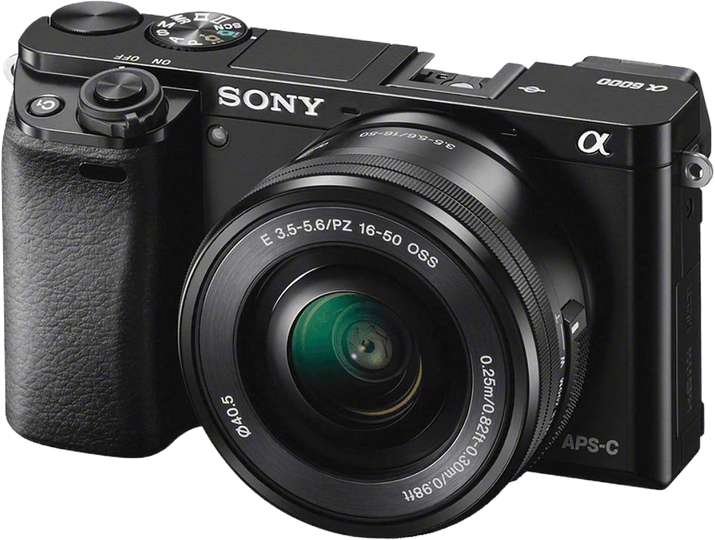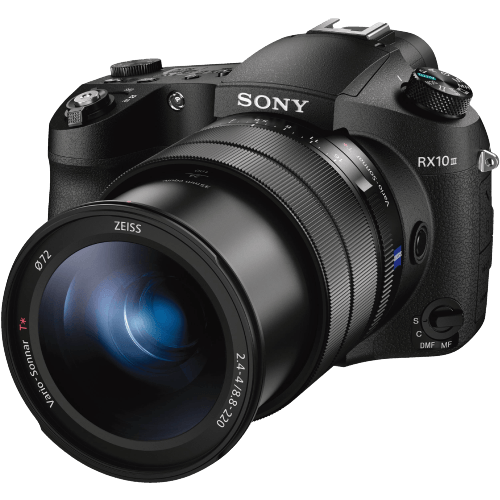Sony a6000 vs Cyber-shot DSC-RX10 III Comparison
Sony a6000

Sony Cyber-shot DSC-RX10 III

The Sony Cyber-shot DSC-RX10 III outperforms the Sony a6000 with a score of 63/100 compared to 57/100. Both cameras were announced in the mid-2010s, with the a6000 in 2014 and the RX10 III in 2016. They share similarities in launch price, with the a6000 priced at $799 and the RX10 III at $1499.
The RX10 III excels with its bridge camera design, offering better overall performance. On the other hand, the a6000 is a mirrorless camera that provides a compact and lightweight option, weighing only 344g compared to the RX10 III’s 1051g.
In terms of specifications, the RX10 III stands out as the superior camera, while the a6000 offers a more portable and affordable choice for users.
Sony a6000 vs Cyber-shot DSC-RX10 III Overview and Optics
The Sony a6000 wins in optics with a score of 67/100, while the Sony Cyber-shot DSC-RX10 III scores 63/100. Both cameras have a CMOS sensor, Bionz X processor, and similar megapixel counts, with the a6000 featuring 24.3 megapixels and the RX10 III having 20 megapixels. However, there are key differences that set these cameras apart.
The a6000 has a higher DXOMARK score of 82 for its sensor, compared to the RX10 III’s 70. This means the a6000’s sensor provides better image quality. Additionally, the a6000 has an APS-C sensor size, which is larger than the RX10 III’s 1″ sensor. A larger sensor size allows for better low-light performance and improved dynamic range. The a6000 also features a Sony E lens mount, giving users the flexibility to change lenses to suit their needs.
On the other hand, the RX10 III has a faster shooting speed of 14 frames per second, compared to the a6000’s 11. This can be beneficial for capturing fast-moving subjects. The RX10 III also has image stabilization, which the a6000 lacks. Image stabilization helps reduce the effects of camera shake, resulting in sharper images.
However, the RX10 III has a fixed lens mount, limiting users to the built-in lens. This can be a disadvantage for those who want to experiment with different lenses.
Taking these factors into account, the Sony a6000 is the better choice for users who prioritize image quality and lens flexibility. The Sony Cyber-shot DSC-RX10 III may be more suitable for those who need faster shooting speeds and image stabilization, as long as they are comfortable with the limitations of a fixed lens.
Sony a6000 vs Cyber-shot DSC-RX10 III Video Performance
The Sony Cyber-shot DSC-RX10 III outperforms the Sony a6000 in terms of video capabilities, with a score of 64/100 compared to the a6000’s 56/100. Both cameras share some common specifications, such as having a maximum video resolution of Full HD and dimensions of 1920 x 1080. Neither camera has built-in time-lapse functionality.
The RX10 III’s higher video score is mainly due to its superior maximum video frame rate of 120fps, which doubles the a6000’s 60fps. This allows the RX10 III to capture smoother and more detailed slow-motion footage, providing an advantage for videographers who require this feature.
While the a6000 does not surpass the RX10 III in any specific video-related aspect, it still delivers decent performance with its 60fps maximum frame rate, which is suitable for most casual users and some professional applications. However, it falls short when compared to the RX10 III’s capabilities.
Considering the video capabilities of both cameras, the Sony Cyber-shot DSC-RX10 III is the clear winner due to its higher frame rate, offering more flexibility and quality for videographers. The Sony a6000, on the other hand, provides adequate performance for casual users but lacks the advanced features found in the RX10 III.
Sony a6000 vs Cyber-shot DSC-RX10 III Features and Benefits
The Sony Cyber-shot DSC-RX10 III emerges as the winner in the features category with a score of 70/100, compared to the Sony a6000’s 41/100. Both cameras share some common specifications, such as a 3-inch screen size, no GPS, and no Bluetooth connectivity. However, there are notable differences that set them apart.
The Sony Cyber-shot DSC-RX10 III has a higher screen resolution of 1,228,800 dots, while the Sony a6000 has 921,600 dots. This means the RX10 III provides a clearer and sharper display. Additionally, the RX10 III has a touchscreen, which the a6000 lacks, making it more convenient for users to navigate and control the camera.
Both cameras have flip screens and Wi-Fi capabilities, but the RX10 III’s superior screen resolution and touchscreen functionality make it a better choice in terms of features.
On the other hand, the Sony a6000 still has some positive aspects, such as its flip screen, which is also found in the RX10 III. This feature allows users to take photos and videos from different angles, making it versatile and user-friendly.
In comparing the two cameras, the Sony Cyber-shot DSC-RX10 III stands out with its higher feature score, primarily due to its better screen resolution and touchscreen. While the Sony a6000 has some similar features, it falls short in comparison. The RX10 III’s advanced features make it the better choice for users who prioritize camera functionality and convenience.
Sony a6000 vs Cyber-shot DSC-RX10 III Storage and Battery
The Sony Cyber-shot DSC-RX10 III wins in the storage and battery category with a score of 24, while the Sony a6000 scores 21. Both cameras have one memory card slot and accept SD / SDHC / SDXC and Memory Stick cards. They also share the same battery type, NP-FW50, and neither camera has USB charging.
The DSC-RX10 III outperforms the a6000 with a battery life of 420 shots, whereas the a6000 only manages 360 shots per charge. This longer battery life makes the DSC-RX10 III more suitable for extended shooting sessions.
On the other hand, the a6000 does not have any advantages in the storage and battery department over the DSC-RX10 III.
Considering the above points, the Sony Cyber-shot DSC-RX10 III is superior in terms of battery life, making it a better choice for those who require prolonged usage. The a6000, however, does not offer any benefits in this aspect.
Sony a6000 vs Cyber-shot DSC-RX10 III – Our Verdict
Are you still undecided about which camera is right for you? Have a look at these popular comparisons that feature the Sony a6000 or the Sony Cyber-shot DSC-RX10 III:

